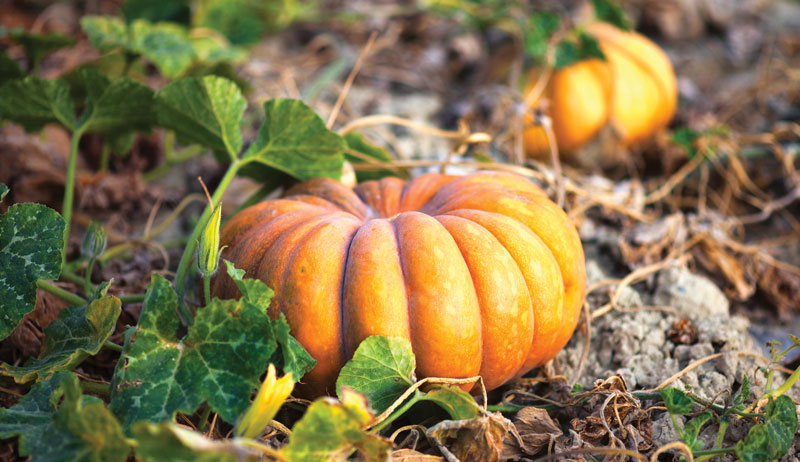I was ecstatic the first time we grew pumpkins. My kids anxiously awaited their homegrown jack-o’-lanterns while I eagerly envisioned homemade pumpkin pies. Pie pumpkins, jacks, miniatures and even Cinderellas sprawled across our too-small garden that year. Our family was surprised at the sheer quantity of pumpkins a tiny patch can provide!
In the years since, we have narrowed down our selection of pumpkin varieties to those that make the best decorations and the best pumpkin pies. Even better, all those pumpkins are readily preserved with a pressure canner, a few jars and a bit of time.
Here’s how we turn our pumpkin patch into a larder full of jars, each ready to make a pie.
Pumpkin Selection
The good news is that it only takes two to four plants to produce all the pumpkin puree a small family will likely need for an entire year. However, you don’t have to grow your own pumpkins to achieve that sought-after, fresh-from-the-farm flavor.
Beginning around September and running through the holidays, most regions maintain a steady supply of these delectable orbs in the stores and the farmers markets. From-scratch baking is just a simple matter of making a quick trip to town.
The best pumpkins to use in any type of recipe are by far the pie pumpkins. Also commonly called sugar pumpkins, these varieties are much smaller than the more recognizable jack-o’-lantern varieties and boast a significantly higher sugar content. Most pie pumpkins also produce a smoother final product than others, such as the jack-o’-lantern varieties.
However, don’t be discouraged if a large jack-o’-lantern is the only pumpkin you have access to. While technically not the best for pies or other pumpkin-based food fare, these will still produce a fine end product with a little extra prep. Most often, this simply means adding more sugar to the recipe than originally called for to offset the lower sugar content.
These pumpkins also tend to be stringier than their smaller counterparts and may require additional runs through a sieve or blender to create the smoothest texture possible. So don’t worry if you can’t find those little pie pumpkins.
Regardless which type of pumpkin you select, always go for the firmest pumpkins available with little to no blemishes. Stems should be firm and connected solidly to the pumpkin. You should notice no soft spots, including on the bottom of the pumpkin.
When handling, hold pumpkins by the sides and not the stem to avoid damaging the tender flesh inside. Store pumpkins in a cool, preferably dark, location until ready to process.
Read more: Save seeds from your pumpkins! This video shows you how.
Canning Help
While it’s true that pumpkin can be easily frozen for future use, not everyone has access to extra freezer space. By using a pressure canner, however, enough pumpkin can be processed within a few short hours to supply a small family with an entire year’s worth of pumpkin…

